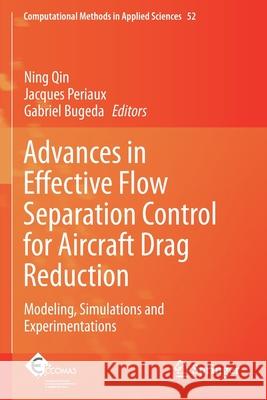topmenu
Wyniki wyszukiwania:
wyszukanych pozycji: 2
 |
Advances in Effective Flow Separation Control for Aircraft Drag Reduction: Modeling, Simulations and Experimentations
ISBN: 9783030296902 / Angielski / Miękka / 2020 / 341 str. Termin realizacji zamówienia: ok. 22 dni roboczych (Dostawa w 2026 r.) |
cena:
602,40 |
 |
Flow Control, Active and Passive Applications
ISBN: 9783036586731 / Angielski / Twarda / 2023 / 272 str. Termin realizacji zamówienia: ok. 16-18 dni roboczych (Dostawa w 2026 r.) |
cena:
337,98 |










